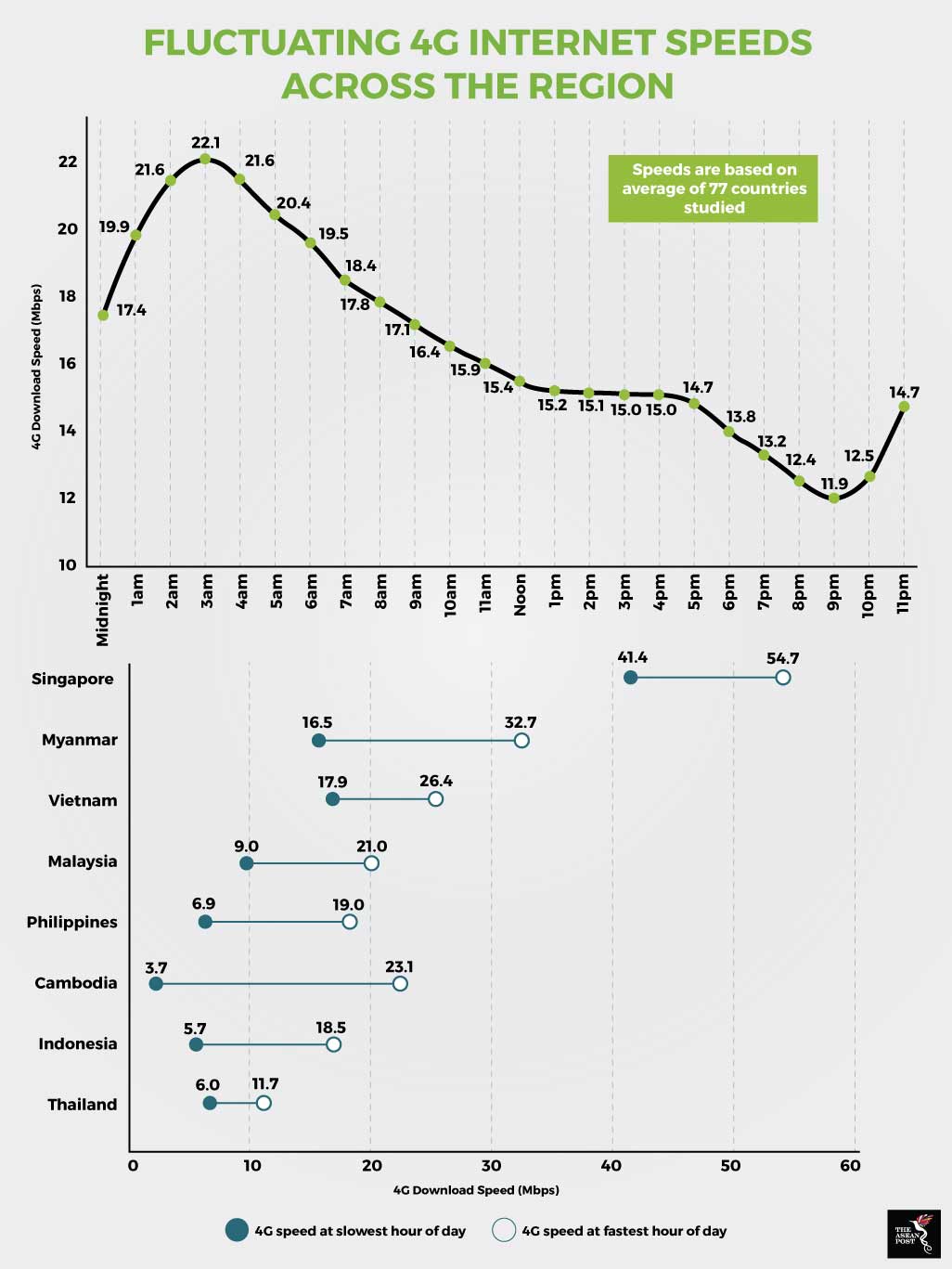Recently, Opensignal - a London-based company that specialises in mapping wireless coverage - presented its first report titled “How 5G will solve the congestion problems of today's 4G networks”. In the report, the mobile analytics company examined 77 countries worldwide which included the ASEAN region. The report collected data between 1 January to 31 December 2018, and was published on 20 February.
According to We Are Social, ASEAN has a large mobile market with all member countries averaging more than 100 percent active mobile internet connections as opposed to population. The number of active connections far outweigh the populations in these countries as most mobile users in the region own more than one subscriber identification module (SIM).
We Are Social points out that as of January 2017, the region’s average went beyond the global average in terms of mobile internet connectivity. While the global average was 108 percent, the regional average was 133 percent.
While mobile internet connectivity provides countless opportunities for numerous industries and makes life for everyday people more convenient, having connectivity alone would not have nearly as much meaning if it is of low quality. Unfortunately, this is the case across most of ASEAN.
An earlier study by Opensignal revealed that with the exception of Singapore, overall video experience in the region was of low quality. The study, which was conducted from June to September, attributed the poor video-watching experience in some Southeast Asian countries to slow internet download speeds. Opensignal said that it was “no surprise” that Cambodia, Malaysia, Indonesia, the Philippines, Thailand and Vietnam had poor video-watching experiences due to the fact that these six countries have less than 10 megabits per second (Mbps) on average download speeds.
But while speed played an important part in the quality of video-watching in these countries, Opensignal also noted that speed was not everything and that it was, in fact, latency which played a bigger role. This, however, only applied to countries where download speeds were already high.
Congestion
Opensignal’s latest report suggests that another reason connectivity may be suffering in the region is due to the congestion present in 4G. This assertion is based on the fact that internet speeds were found to fluctuate throughout the day, with the slowest speeds occurring between 5 p.m. to 11 p.m. when most internet users were online, and the fastest speeds occurring between 2 a.m. to 5 a.m. when few users were awake.
 Source: Opensignal
Source: Opensignal
“Even the fastest 4G countries need 5G to counter big drops in speeds at busy times. In the fastest two countries in Opensignal’s analysis, South Korea and Singapore, users experienced a speed gap of 13 Mbps between fastest and slowest hours, despite the two highest average 4G download speeds measured of 55.7 Mbps and 54.7 Mbps, respectively,” the report said.
In fact, internet speeds were found to have fluctuated even more so in cities, which may point to the failing of 4G networks as cities often have the latest 4G technologies deployed and so should deliver the fastest speeds. Opensignal’s measurements show that cities did indeed have these technologies and fastest speeds but only late at night when most users weren't in need of a faster mobile experience.
The future is 5G
5G networks provide the solution to internet congestion as it’s built using new high bandwidth, high-frequency spectrum bands that help mitigate the daily cycle of congestion seen on today's 4G networks. These 5G services will support more simultaneous users at very fast speeds.
Moreover, according to Bain & Company, a global management consultancy headquartered in Boston, 5G-capable devices will seamlessly – and nearly instantly – connect to 4G cells when they cannot get a 5G signal. This will allow operators to “deaverage” their approach to cell building and fine-tune the creation of new cells to specific areas with the highest demand density.
Much like the Fourth Industrial Revolution, also known as Industry 4.0, the world’s march towards 5G is inevitable and with incoming demanding technologies like augmented reality or autonomous driving, 5G will be required. Some experts say that most of the world will migrate to 5G by 2020. Meanwhile, we’ll just have to cope with the fluctuating speeds of 4G, and for some of us, maybe sneak in our multiplayer-based online games late at night when most of the world is asleep.
Related articles:
High smartphone usage to boost ASEAN mobile commerce
ASEAN’s poor mobile internet connectivity
